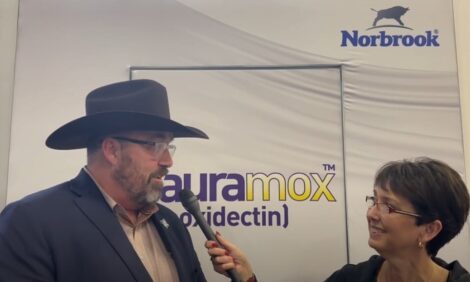



Argentina Livestock and Products Semi Annual 2007
US - By USDA, Foreign Agricultural Service - This article provides the cattle industry data from the USDA FAS Livestock and Products Annual 2007 report for Argentina. A link to the full report is also provided. The full report includes all the tabular data which we have omitted from this article.Report Highlights:
Argentine beef exports are estimated down at 500,000 tons as the government continues to control exports as a way of fighting inflation. A recent increase in cattle and beef prices, due to a firm domestic and foreign demand, forced the government to slow down the approval of export permits. Production is expected to be similar to that of 2006.Situation and Outlook
Exports: Argentine beef exports for 2007 will depend solely on the Government of Argentina (GOA), as it has a complete control on what can be exported via the approval of export permits. Through export restrictions, the government manages the beef supply in the domestic market in order to maintain retail prices as stable as possible. Beef prices have a strong influence on the CPI index, and maintaining a relatively low and controlled inflation is one of the government’s most important goals, especially with presidential elections in late 2007.Most contacts indicate that with a similar beef output as in 2006, beef exports should fall further at 500,000 tons. Domestic consumption continues strong, as the purchasing power of the population grows and unemployment continues to drop. Therefore, a firm local demand, profitable world beef prices, and a stable supply put pressure on prices. Due to a recent increase in cattle prices, the GOA has begun slowing down the approvals of export permits. Because of this slowdown, meat packer’s storage is at full capacity with product ready to be shipped.
The Russian Federation is expected to be the largest market for local beef exports in 2007. However, volumes will probably be smaller due to Argentina’s self-imposed restrictions. Furthermore, local traders expect FOB prices to that market to drop, as more Brazilian exporters are now eligible to ship product. The European Union (EU) will also remain a very important market, especially for premium cuts, which enjoy very high prices (Hilton Quota rump and loin is currently priced at around US$11,000 per ton). Chile, which was closed half the year in 2006 due to a foot and mouth outbreak in Corrientes province, is also expected to be a good market. Exports to the United States, of only thermoprocessed beef, are expected to drop marginally.
Despite export restrictions imposed by the government, Argentine beef exports in 2006 totaled almost US$1.3 billion, slightly lower than the previous year, which had been record. Almost 200,000 tons (carcass weight equivalent) less were exported in 2006, but increased FOB prices almost offset the volume reduction. In value, the EU topped the ranking with almost US$500 million, followed closely by the Russian Federation. Chile and the US followed with US$90 million and US$80 million respectively.
Production: Total beef output for 2007 continues to be estimated at 3.1 million tons. However, contacts report that most ranchers are discouraged by very thin margins due to increased government intervention in the meat sector. They state that if the GOA does not free the market or implement effective policies to encourage production, beef output will begin to drop (some indicate that this process has already begun). Two additional problems discourage production. First, the strong price increase of corn, which doubled in the past 15 months, affects directly cost of beef production. In one way or another, the vast majority of local cattle were finished with corn (as grain or silage). And second, cattle continue to be pushed to new, less productive areas in the west and north of the country as increased world prices favor a shift to grain and oilseed production.
Knowing this, the GOA recently announced that it will “compensate” the increase of the price of corn for feedlots in order to maintain a good supply of beef and therefore stable prices. This compensation will total about US$60 million, which will come from the recent increase of 4 percent on soybean export taxes (now at 27.5 percent). The scheme is for cattle fed for the domestic market only and consists of paying feedlot companies the difference between the spot price (roughly 408 pesos per ton) and a reference price of 293 pesos per ton for 6 kilos of corn per animal per day. Estimating that most cattle are fed around 100 days in feedlots, the final “compensation” will be of about US$20 per head. Contacts believe this will help somewhat in increasing beef supply, but they doubt its real effectiveness. So far this program is not for use at the ranch level and many feedlot companies will not subscribe to the program, as they have to register with the government.
The GOA will also encourage the production of heavier fed steers and heifers at feedlots. It will subsidize with the same system any additional weight above 300 kilos live, at a rate of 3.6 kilos of corn per animal per day.
In early 2007, Tyson Food announced that it had purchased, together with two partners, a slaughter plant in La Pampa province. This business is vertically integrated as one of the partners is a large local farm/ranch company and the other is the Argentine subsidiary of Cactus Feeders, a feedlot company located in Texas. Production will be marketed in the domestic and export market. In late 2005 the largest Brazilian beef processor purchased the largest Argentine beef exporter. Since then, it has acquired four more plants. Also last year another Brazilian beef company purchased a local meat packer owned by a British beef distributor.
Further information
To read the full report including tables please click here (PDF format)List of Articles in this series
To view our complete list of 2007 Livestock and Products Semi Annual reports, please click hereMarch 2007


